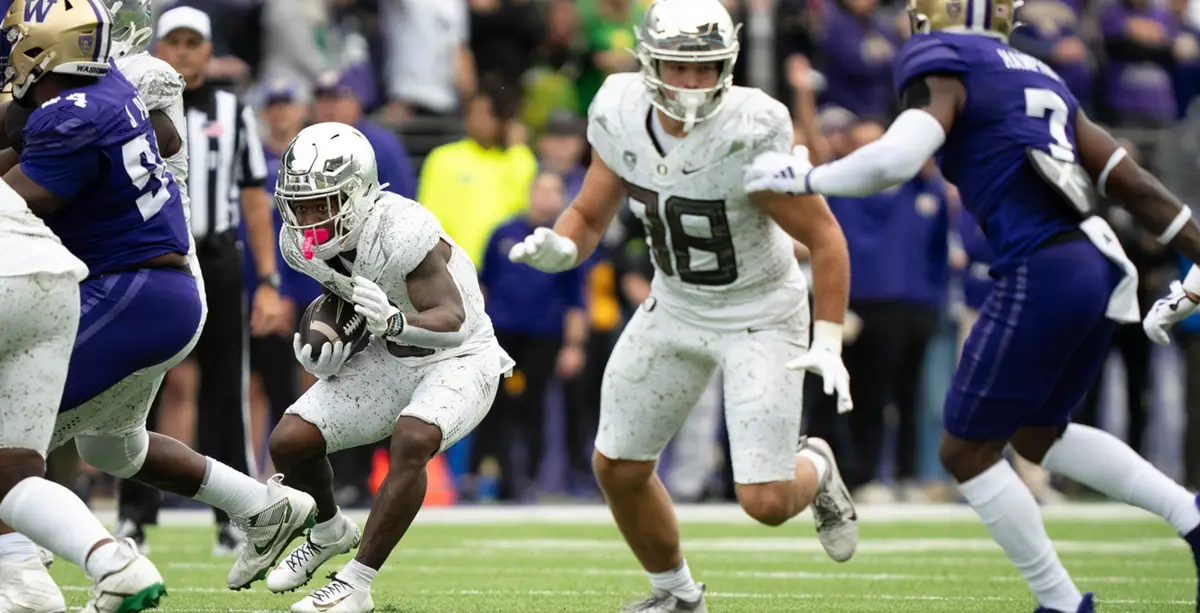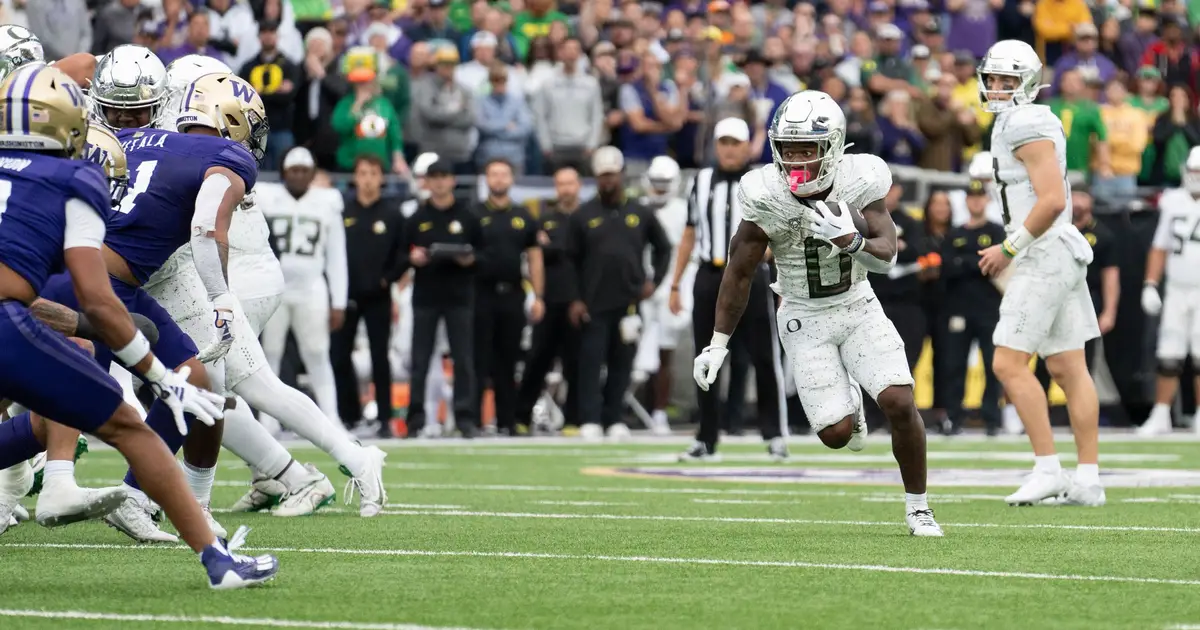Last year we saw Oregon use its jumbo formation, referred to as 14-J, which meant one running back with four tight ends (one of which included Josh Conerly). This formation was a bulldozer but also had some subtlety to it, as it could be used in multiple ways — so much so that I wrote an article on it last year. Now, Conerly is on the field as the starting left tackle, so the formation itself isn’t about getting Conerly on the field. It should, however, still be an essential part of Oregon’s run game and physicality.
And it could have been a key difference-maker in our last game against Washington.
Many fans are going to be quick to point out how Dan Lanning should have taken the points in the two failed fourth-down red zone attempts, and failing to convert a fourth down at midfield gave Michael Penix and the Washington offense prime field position to take the lead. In hindsight, those are painful mistakes, but perhaps the bigger mistake isn’t going for it on fourth but the plays called. Lanning and Offensive Coordinator Will Stein opted to put the ball in Bo Nix’s hands and pass, when Oregon really should have put the ball on the ground to run it with the jumbo package.
All three situations were relatively short yardage, and Oregon was winning the line of scrimmage all day, for the most part. This was the opportunity keep the ball on the ground, get out the jumbo formation and ram the ball right down Washington’s throat to see if they could stop it. They probably couldn’t, especially if the Ducks decided to use any variations of the jumbo formation play that I went over in my article linked above.

Bucky Irving runs while Patrick Herbert looks to block for him against Washington.
(photo by Truong Nguyen)
It also felt like a game where Lanning and Stein forgot about the ground game when the Ducks needed it most. This is something that happened last year with Lanning and then Offensive Coordinator Kenny Dillingham, where the Ducks would stray from an effective ground game and go airborne to maintain balance in the offense when it wasn’t needed.
Let the offensive line control the game and let the running backs burn the clock and keep the Washington offense on the bench. And if it comes down to going for it on fourth down with short yardage, the coaches need to run a high-percentage play, like running the ball behind a massive offensive line — whether that is Nix handing the ball off to Bucky Irving or Jordan James, or taking it himself while getting a massive push from behind. It doesn’t necessarily matter because that is a play with a high-percentage chance of converting the needed yards.
Instead we saw Nix roll out of the pocket and make a throw to receivers who simply weren’t open. That is a low-percentage play at a critical time. The Ducks don’t need to be that desperate; get the big bodies out and lets see them give Oregon’s runners a chance to pick up the needed yards.
Lanning and Stein need to trust in their run game; they have built a team designed to run the ball with power, so let’s see it. Put the ball into the hands of the runners and let that offensive line push the opponent off the field.
David Marsh
Portland, Oregon
Top Photo By Truong Nguyen

Natalie Liebhaber, the FishDuck.com Volunteer Editor for this article, works in technology in SLC, Utah.
Related Articles:
Oregon Enters Playoffs Better Off Than Last Year
Will The Coaching Carousel Kill Oregon's CFP Chances?
The Playoff Formula Hasn't Changed
Oregon Aims to Bury Dawgs, Punch Playoff Ticket in Rivalry Clash
Huskies Are the New Beavers, Stay In Your Lane Kiffin, and the Civil Apple Cup War
Oregon Football: The X-Factor Vs. Washington

David Marsh is a high school social studies teacher in Portland, Oregon. As a teacher he is known for telling puns to his students who sometimes laugh out of sympathy, and being both eccentric about history and the Ducks.
David graduated from the University of Oregon in 2012 with Majors in: Medieval Studies, Religious Studies, and Geography. David began following Ducks Football after being in a car accident in 2012; finding football something new and exciting to learn about during this difficult time in his life. Now, he cannot see life without Oregon football.

